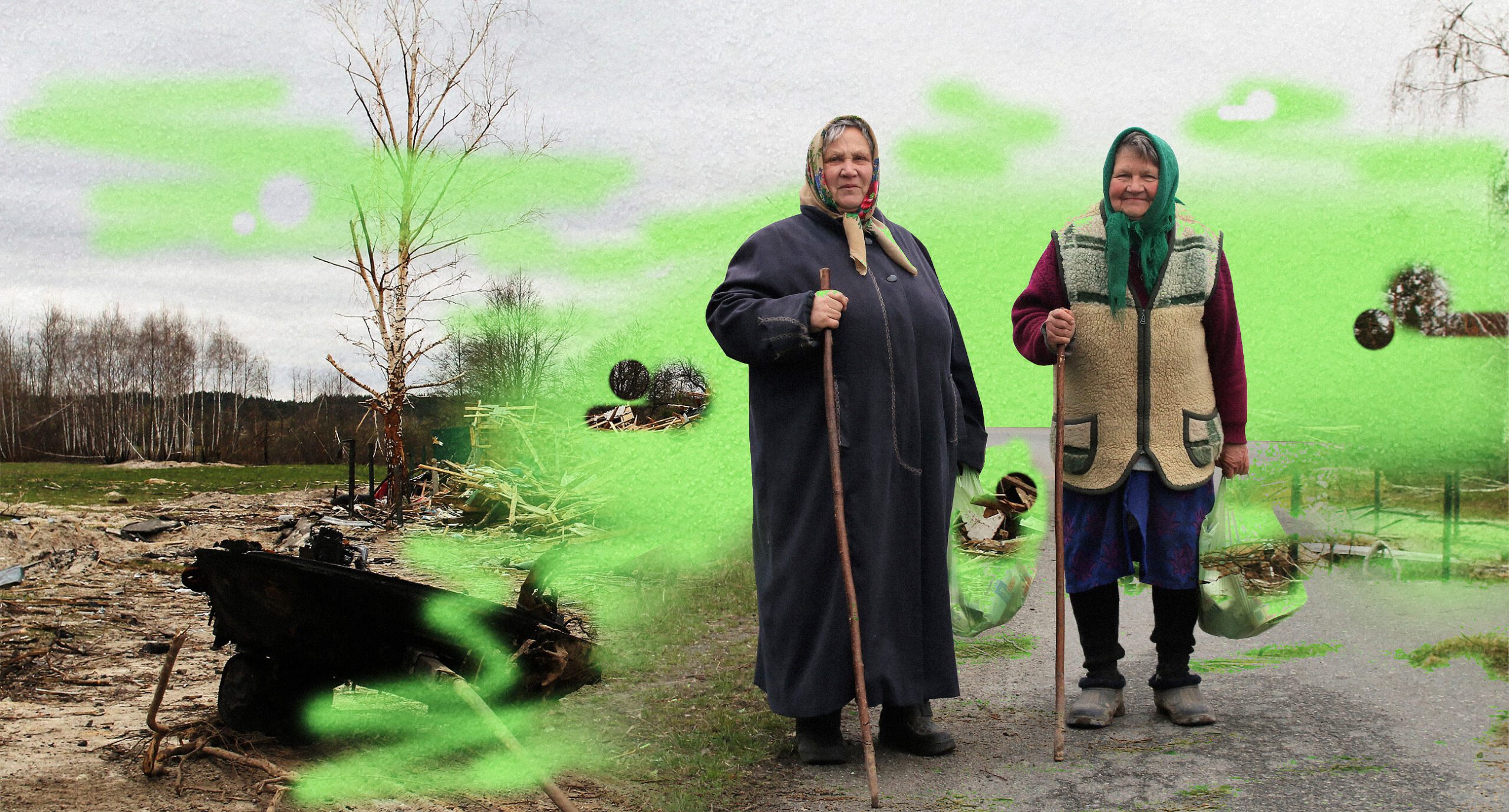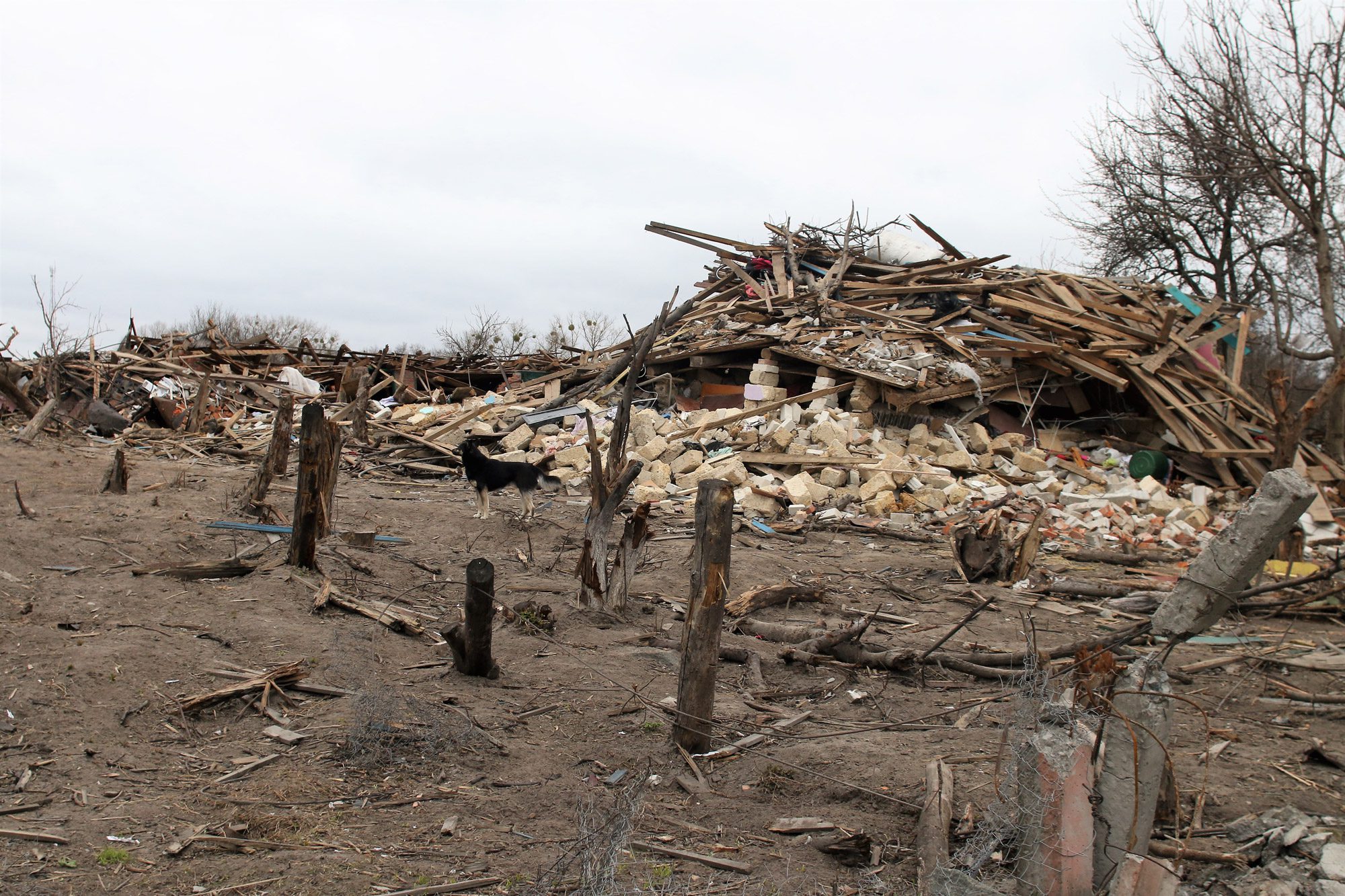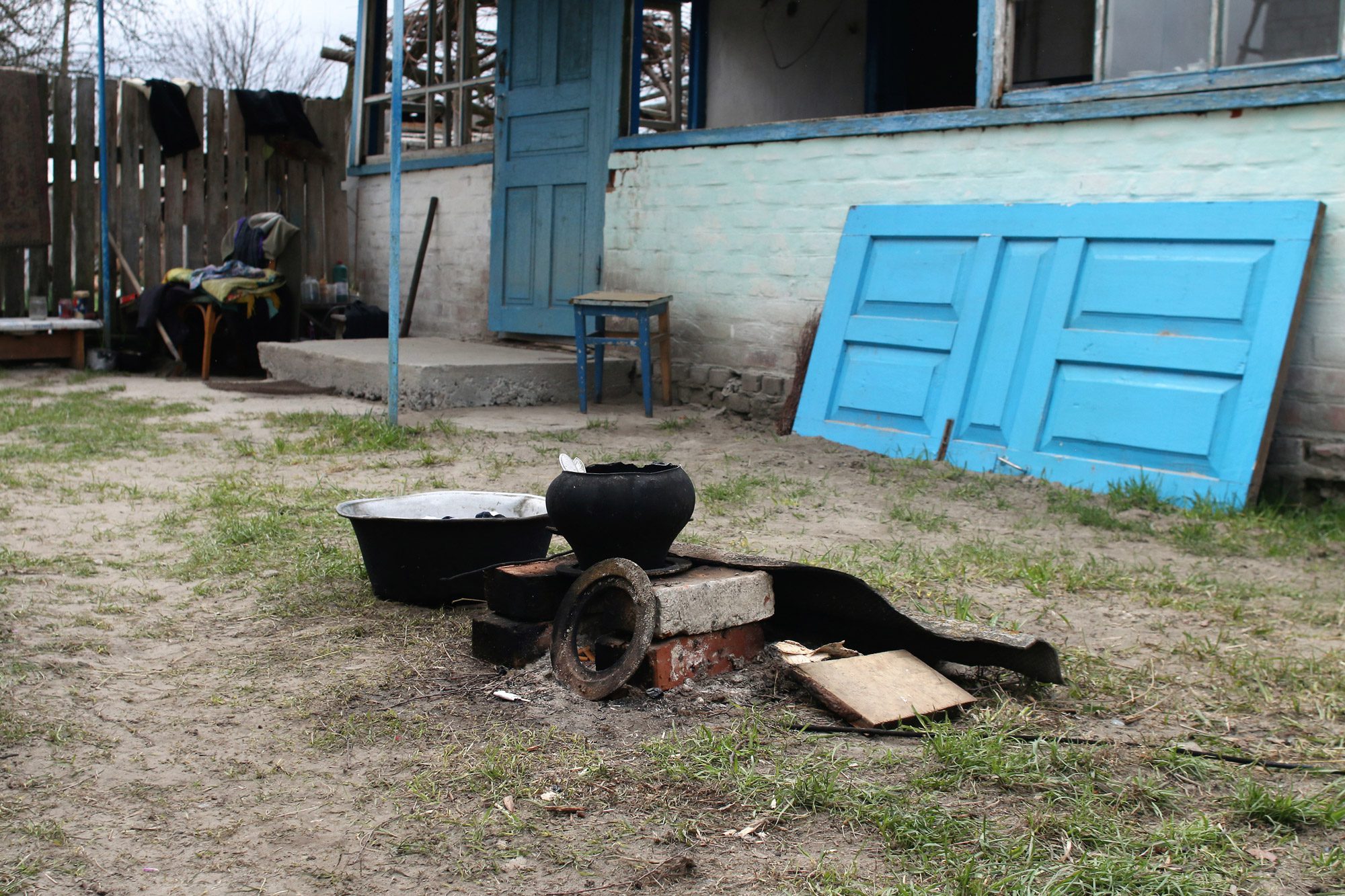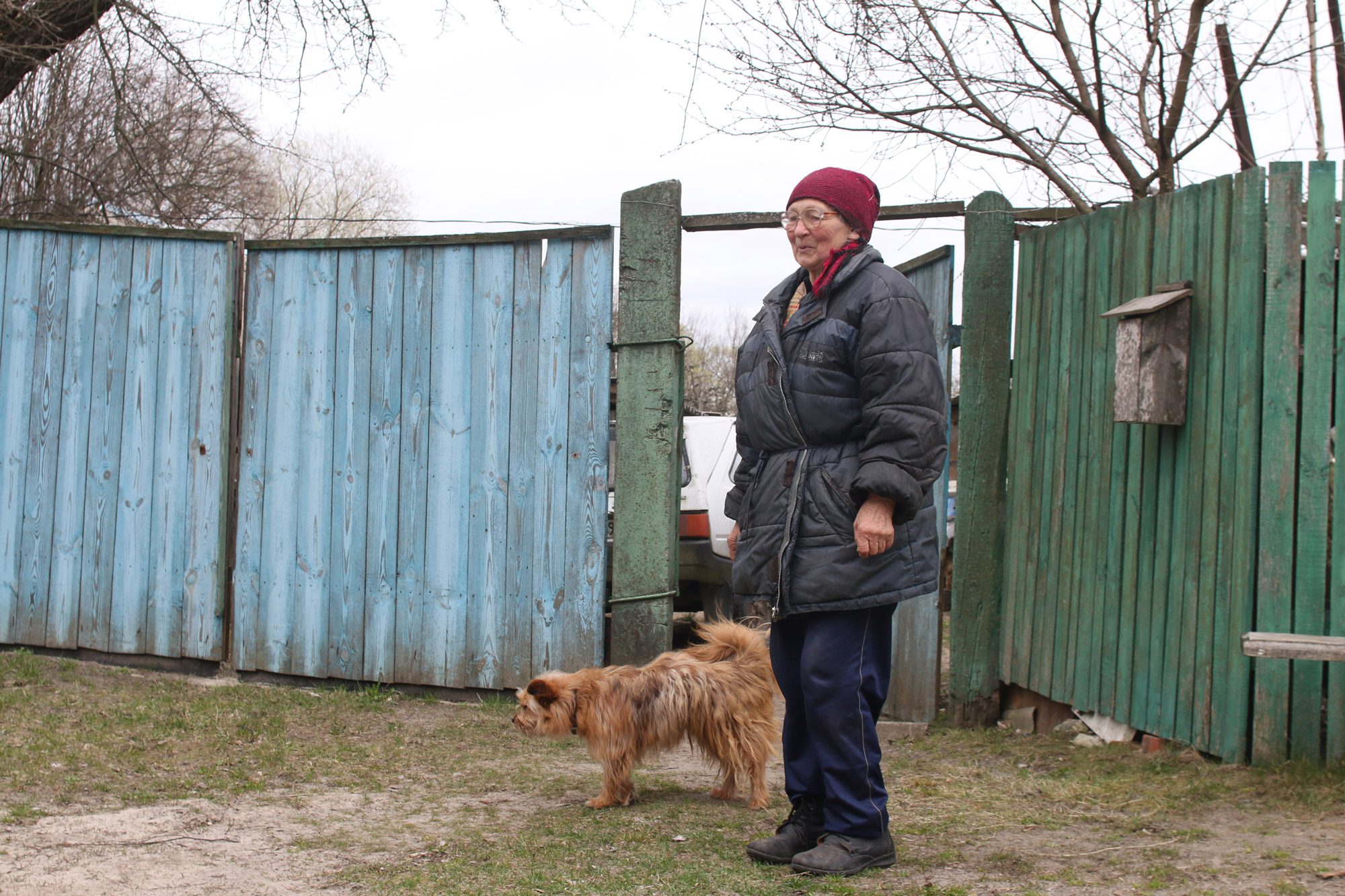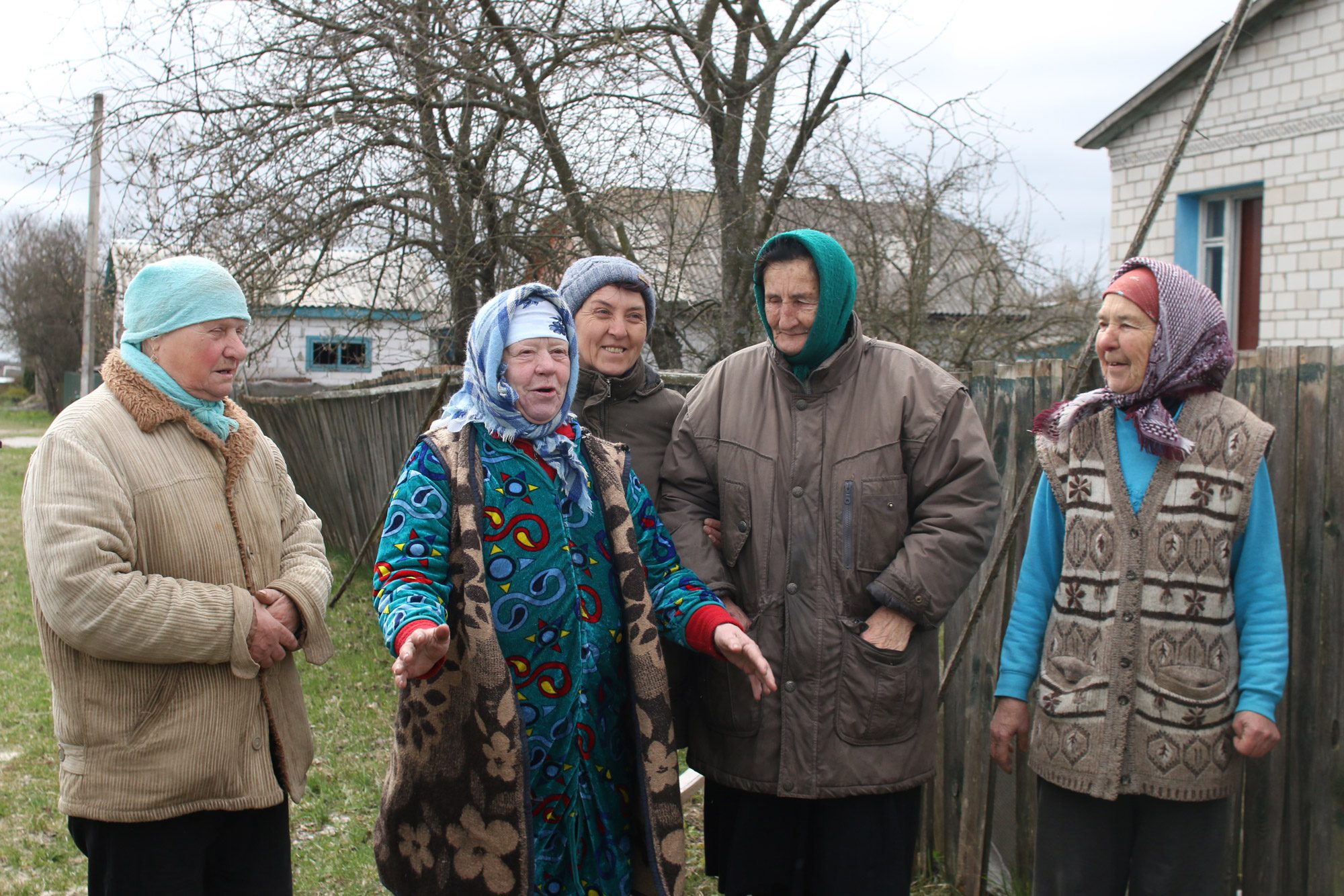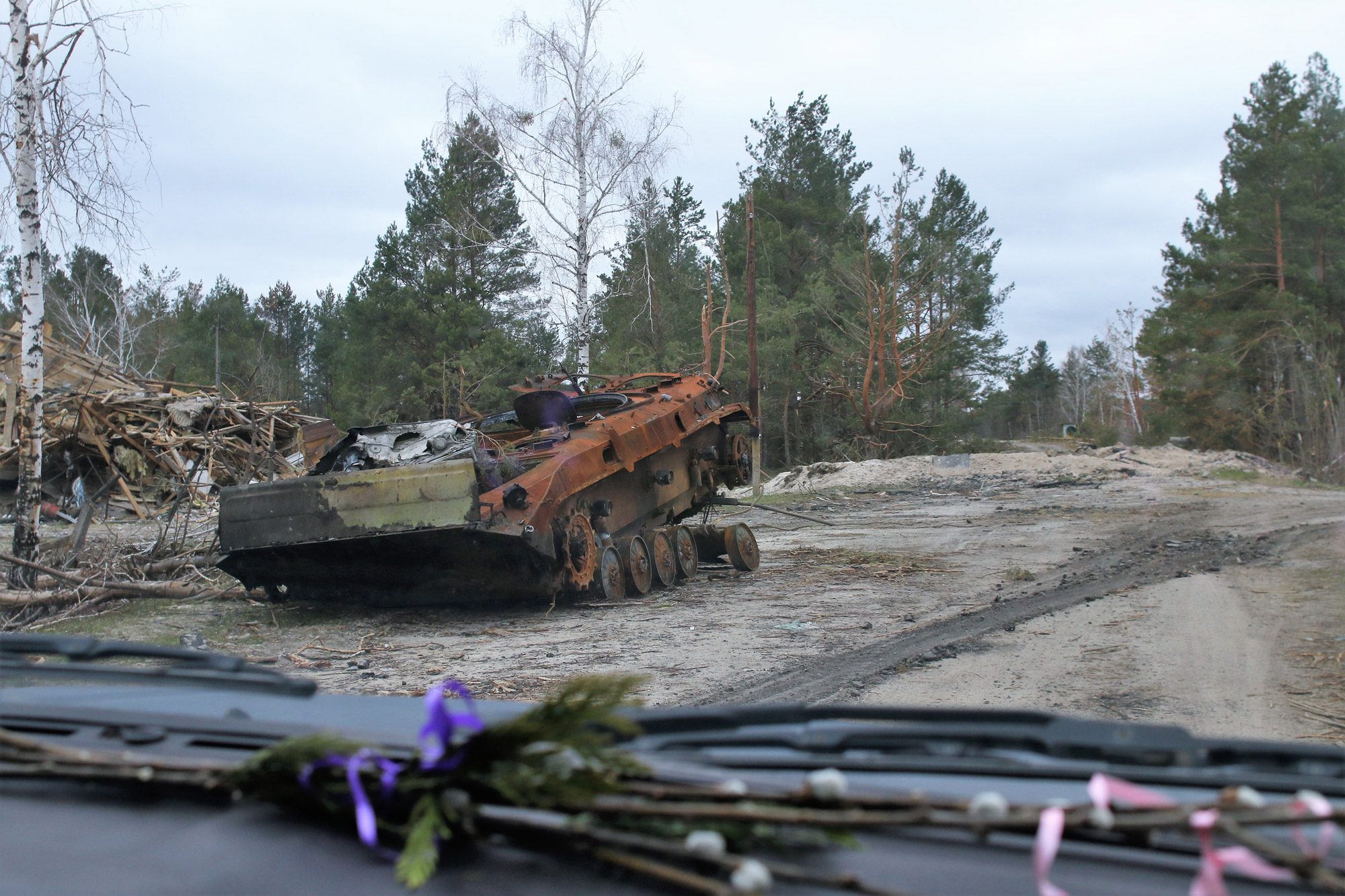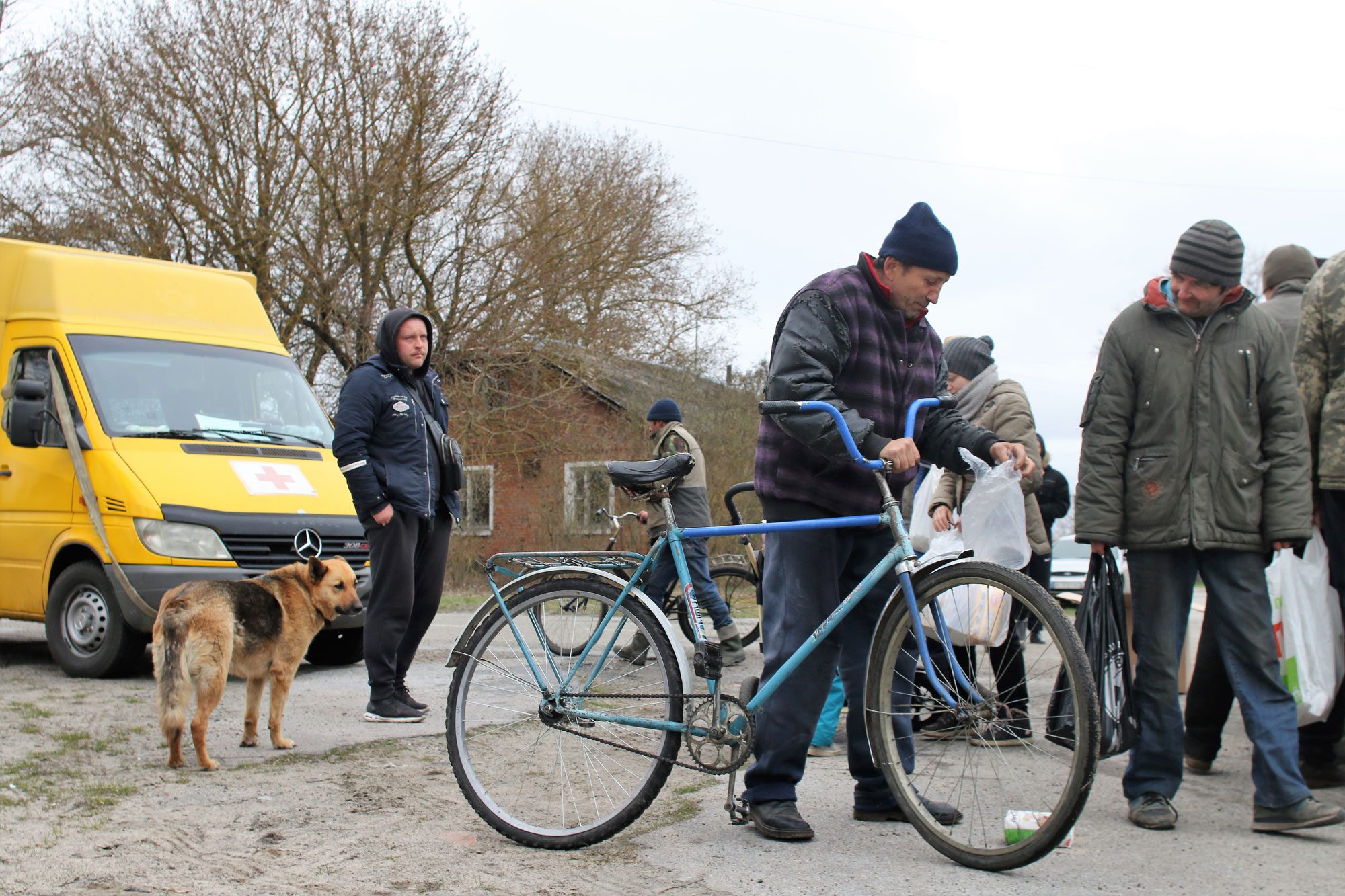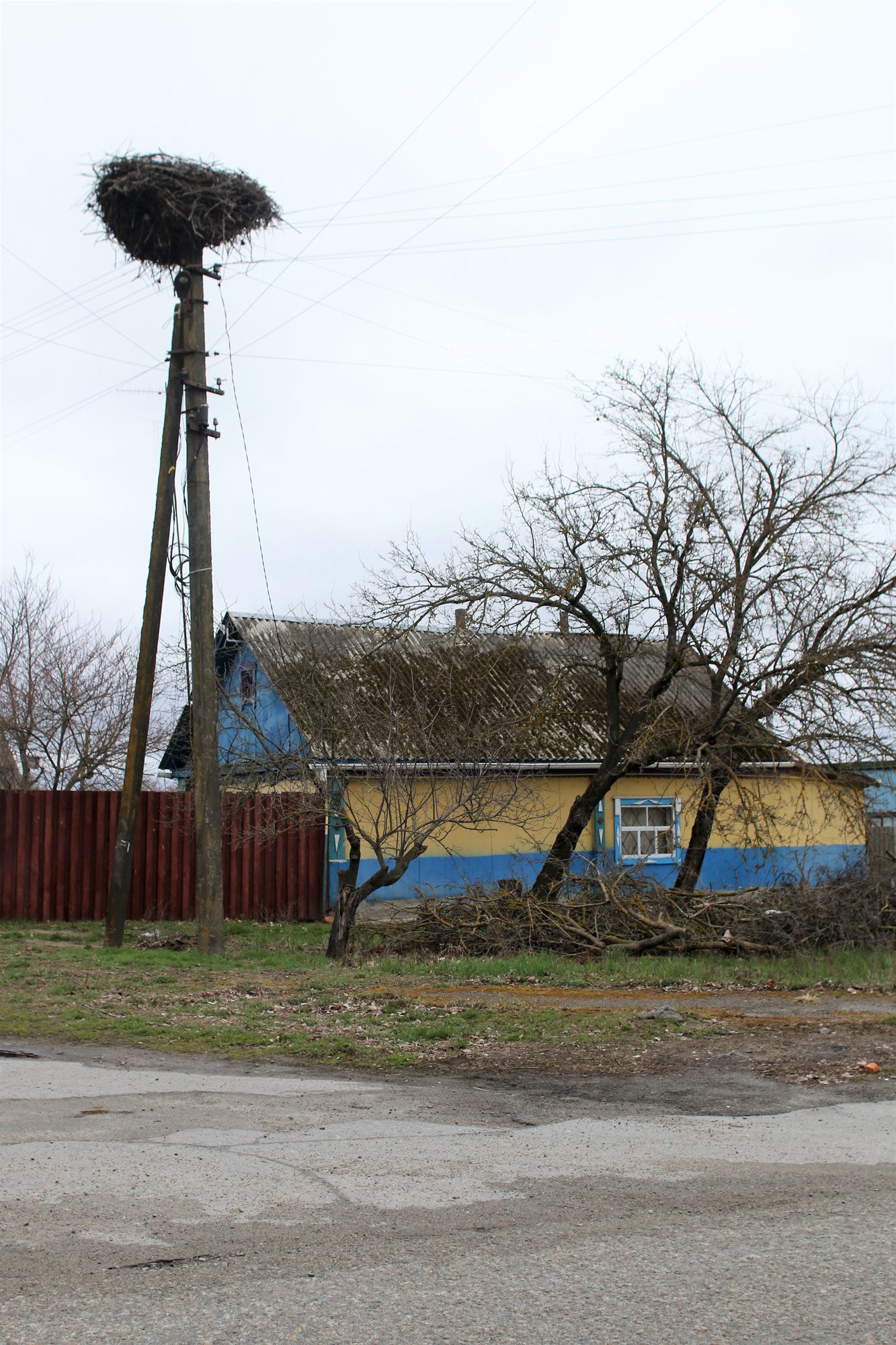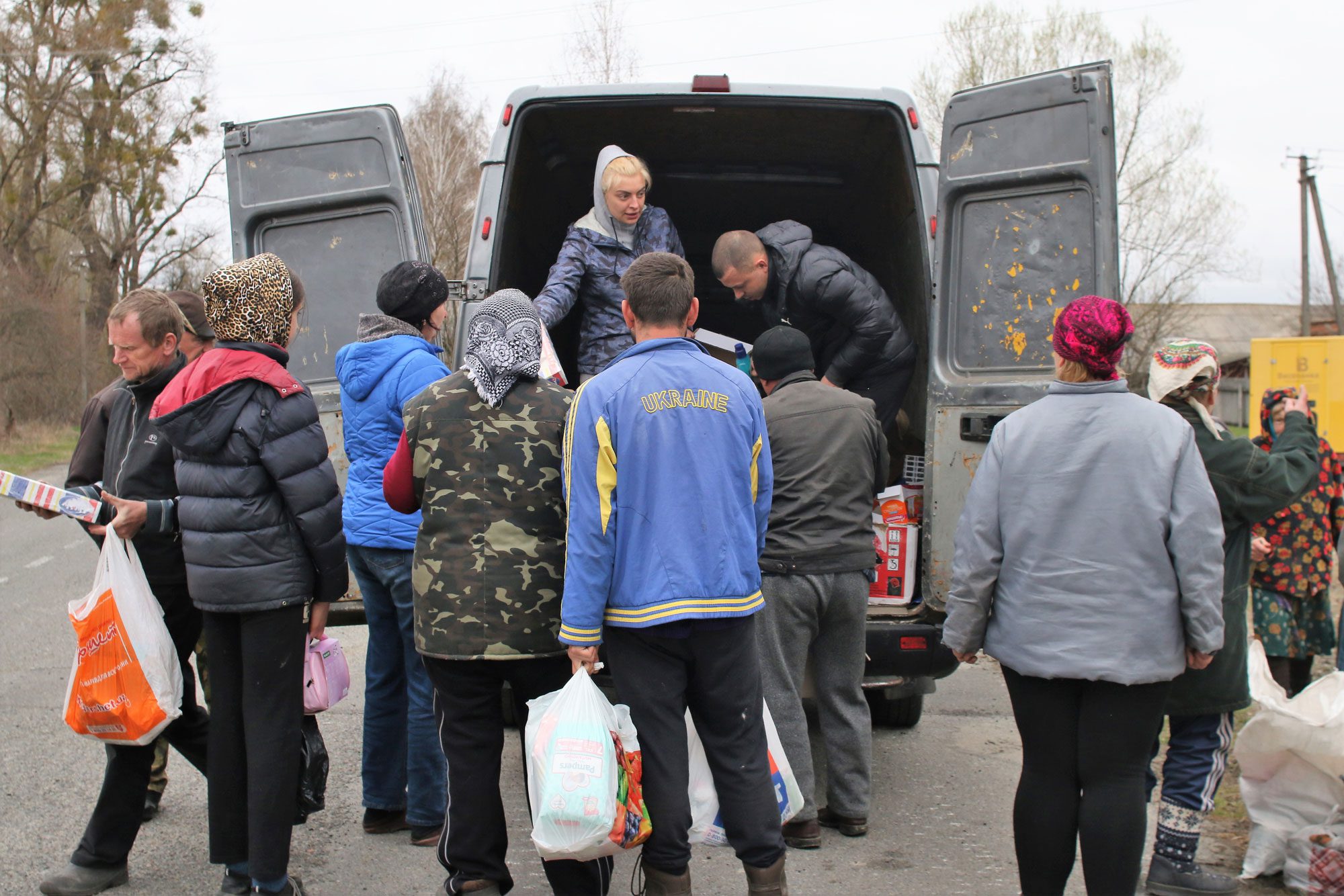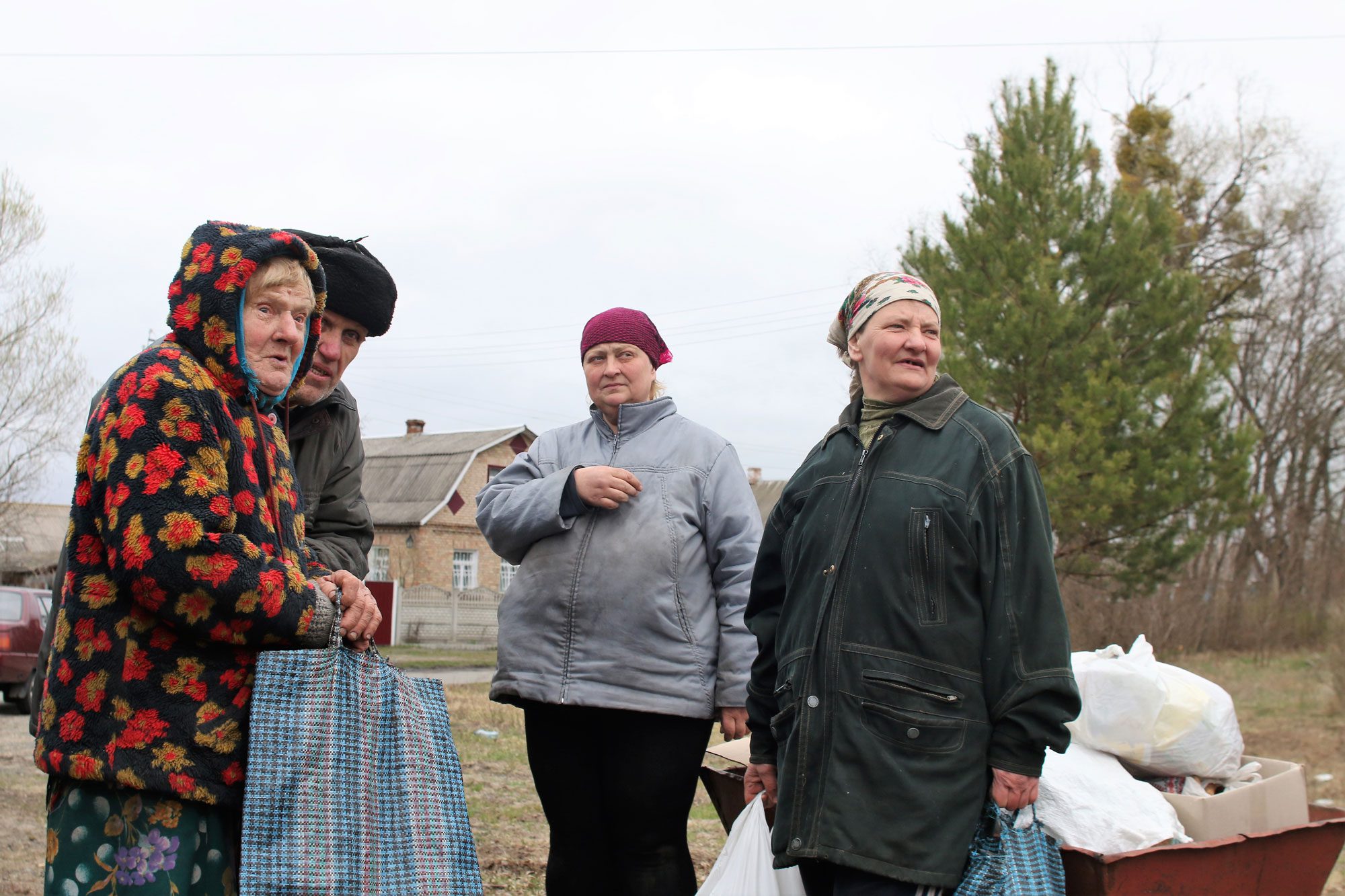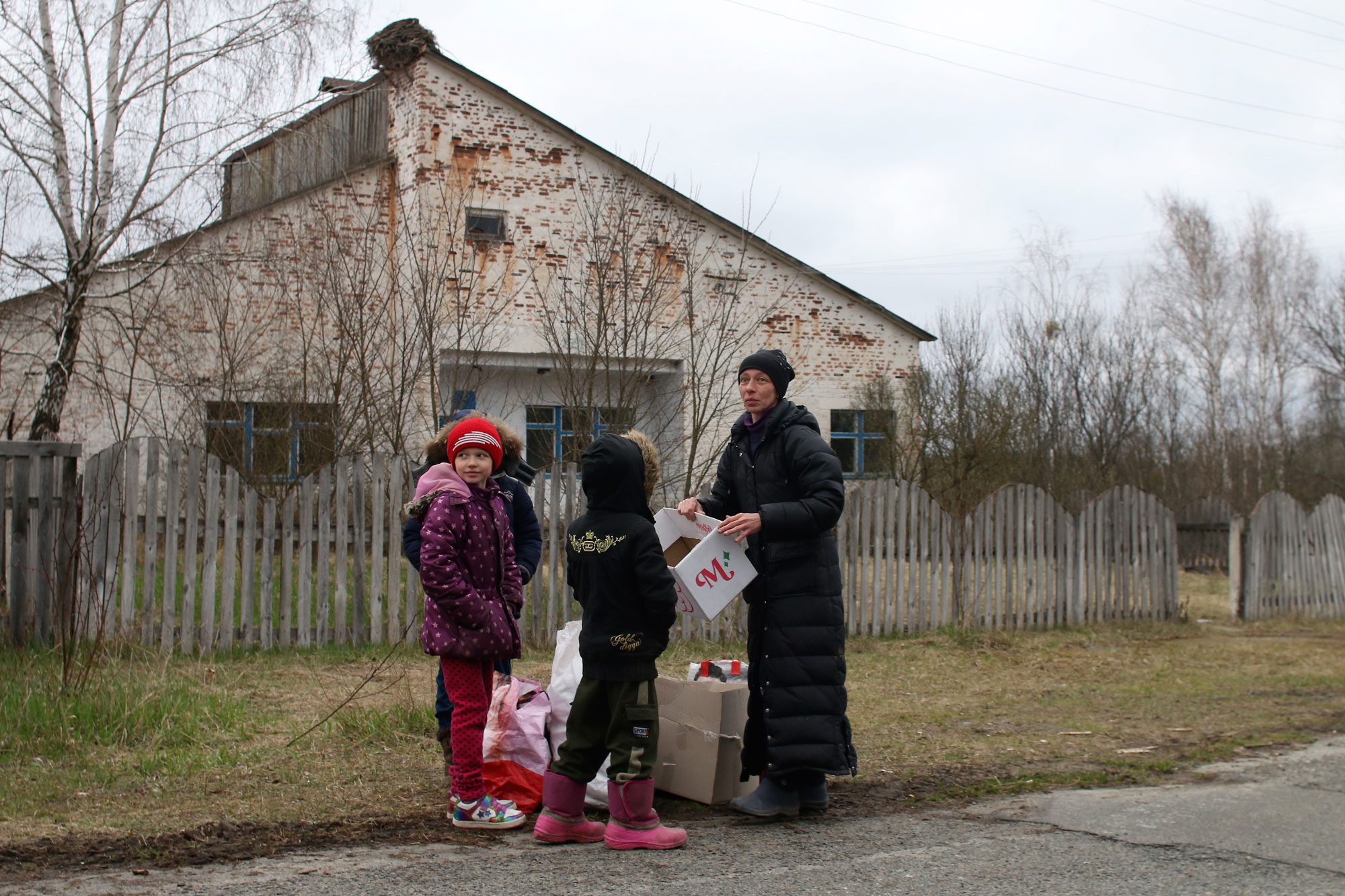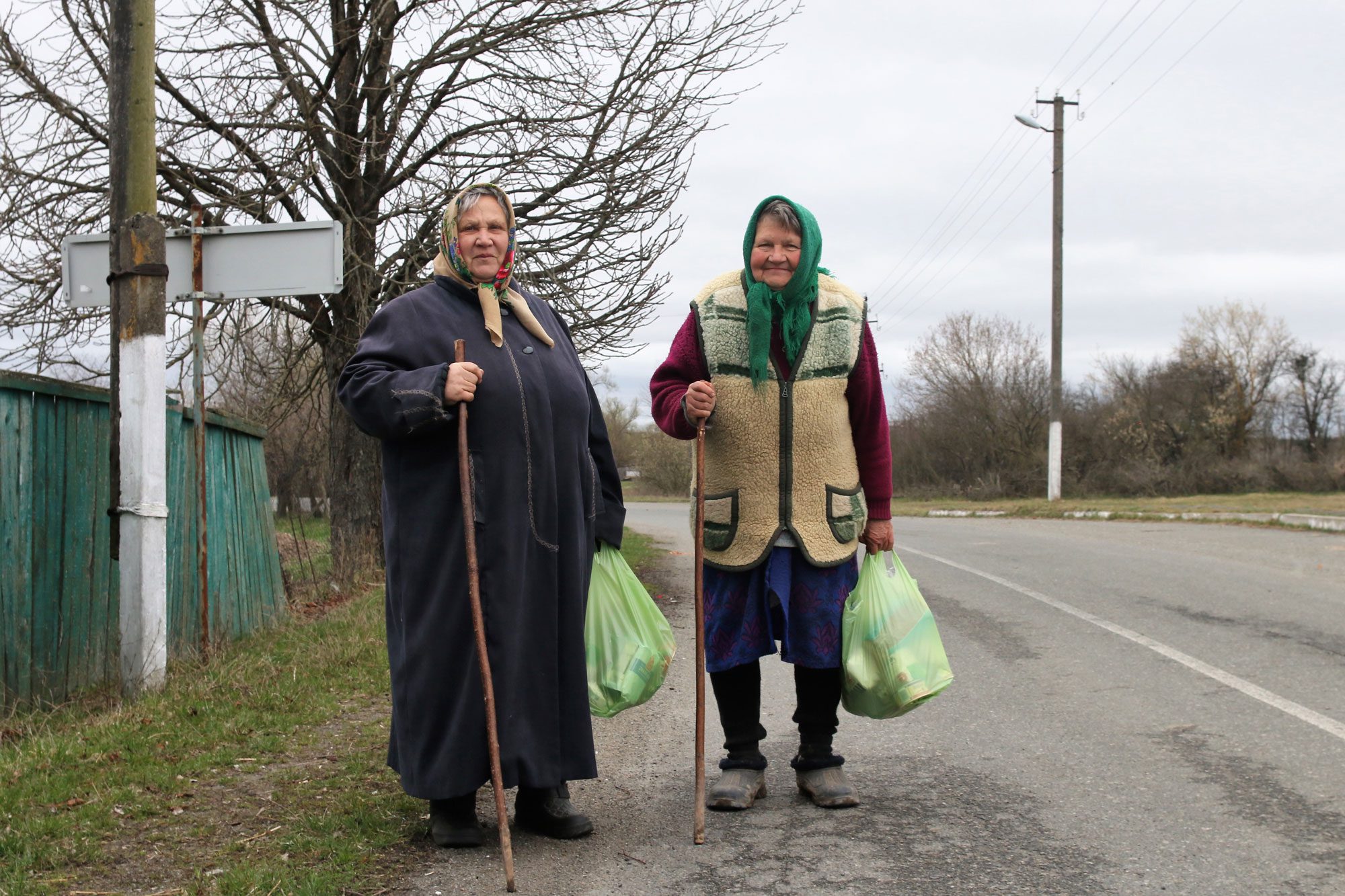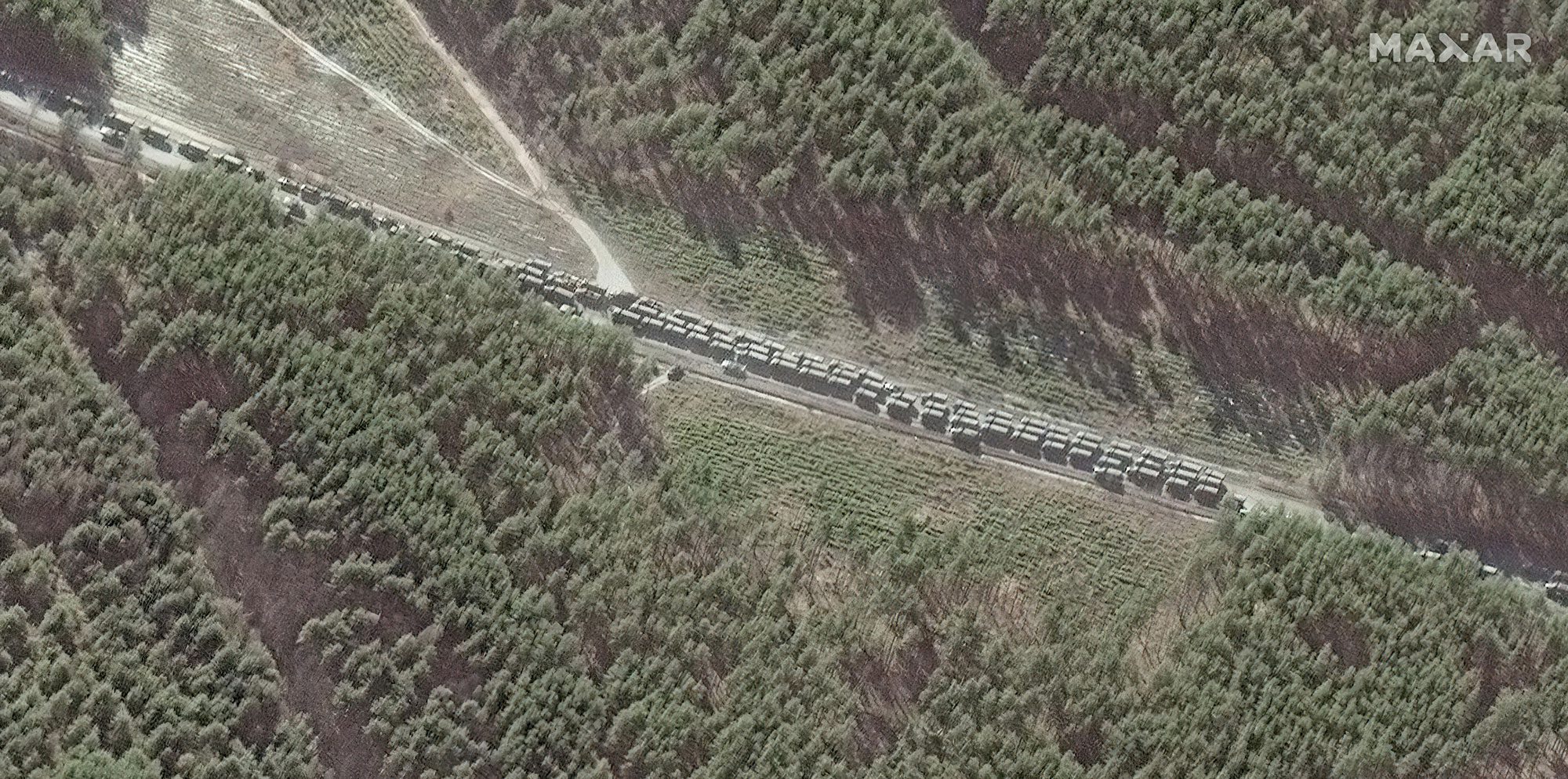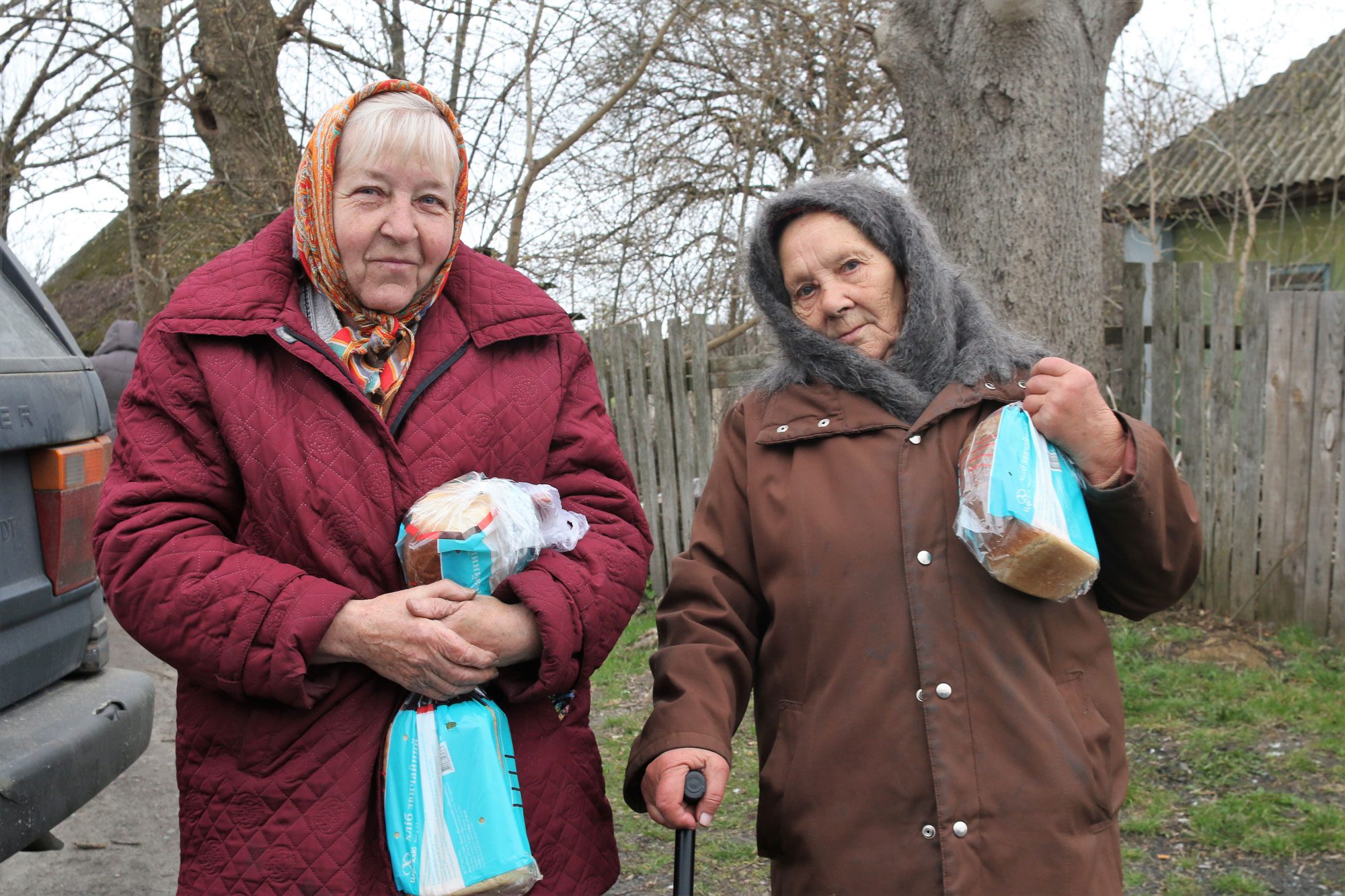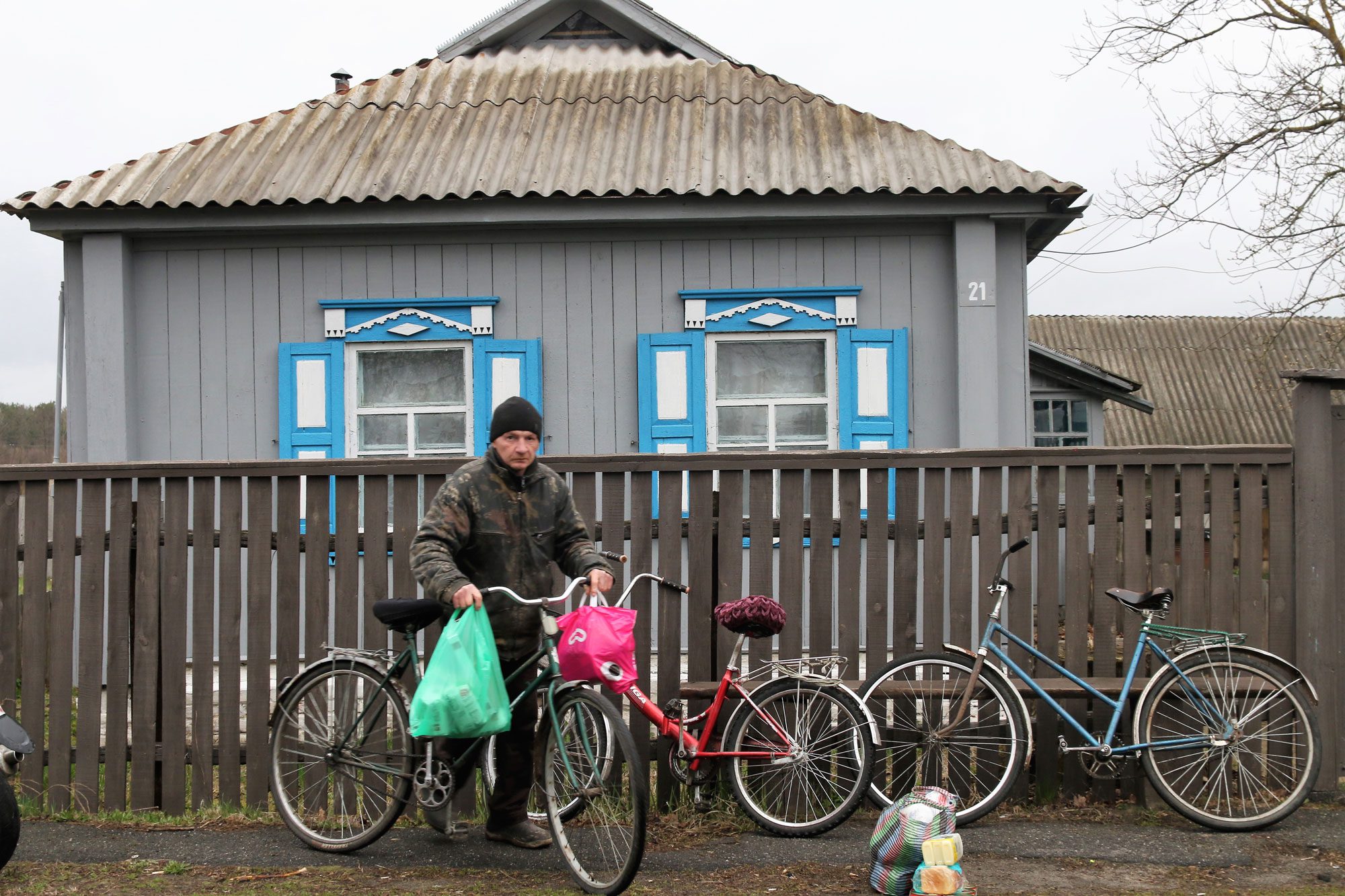The villages of the Ivankivska community, bordering the exclusion zone, were liberated from the Russian occupiers in the first days of April. But even three weeks later, locals are experiencing widespread fear. Fear of hunger, disaster, death. Fear of war passed down from generation to generation. Journalist Svitlana Oslavska visited the villages of the Ivankivska united territorial community. In her special report for Zaborona, she reveals how the villages are recovering after the fighting and occupation.
“We are still living”
There are storks and air bombs in the fields. In one yard, a yellow and blue flag sticks out of a haystack. Smaller, red flags indicate mines. An old woman comes to the crossroads, looks with suspicion, and asks the expected: “Password. Say: “Palianytsia”.
She sees that we are Ukrainians, and tells about what she went through: how “everything was cracking and flying” in the village, what houses burned down, what fear she experienced in her respectable age. Volunteers don’t have time for long conversations; they give the woman a package of groceries and go on.
Three minibuses from Ivano-Frankivsk are heading from the so-called “Warsaw route” – the M-07 highway – to the north, to the most remote villages of the Ivankivska community, on the border with the exclusion zone. Each carries about two tons of food for villages that have been occupied and cut off from the world since the first days of the war. These are Karpylivka, Domanivka, Pisky, Dytyatky, Hornostaipil – small villages of several dozen houses each. But first we stop in Kukhari – a relatively large village in the south of the community, bordering the Zhytomyr region. During the hostilities, 80% of farms were destroyed here. People show traces of bombs in the gardens. The military, accompanying the volunteers, specify: these are 500-kilogram ones. A local woman told the Human Rights Media Initiative, that she counted more than 300 bombs in 22 days.
-

The village of Kukhari. Photo: Svitlana Oslavska
No people can be seen in the area where the houses are completely destroyed. But on the main street I see surviving houses and people returning home. Oleksandr Fedorenko shakes hands and invites: “Let’s go, I’ll show you the cassette bombs in the gardens.”
There is an unexploded shell in his yard. The Fedorenkos, pensioners, were able to leave the village for Bila Tserkva – “we went not to our relatives, but simply to strangers.” Now they have returned, patched up the roof, tomorrow they want to install windows.
“The projectile is in the summer kitchen, four meters from the house. We were told not to go there, because it could explode at any moment. But sometimes we spend the night there. My wife is very scared, but I’m not. I am 70 years old,” says Oleksandr Vasyliovych, as if this explains the lack of fear.
-

The yard in the village of Kukhari. Photo: Svitlana Oslavska
Nina Tkach lives on another street, right on the edge of the village. She didn’t leave the village, so she tells what happened to people and cattle at the time when Kukhari was under occupation and when the fighting was going on: “At first, we leaved for ten days without bread. People ate potatoes with eggs. And when the military started shooting, our chickens stopped laying. In ten hives, bees died from stress. As it banged, they fell, but could not get up.”
Nina Ivanivna smiles through her glasses at the volunteers and at the dog that ran out of the yard: “My Tuzik is afraid of thunder, so we sleep together. We both smell the same now.”
-

Nina Ivanivna. Photo: Svitlana Oslavska
There was heavy fighting in Kukhari. The Ukrainian military liberated the village in mid-March, and in response the Russians destroyed Kukhari not only with artillery but also with aircraft. Here and there we see funnels from bombs. It is April 19, and there is no light in Kukhari yet, as in other villages of the Ivankivska community. Officially, there are more than 700 residents here, and although even people with children are returning to the village, I mostly see women of retirement age on the streets. They are glad that the volunteers brought them candles, so they get together in the evenings and the dark time of the day passes faster.
“We are still living. We sit next to the stove, chatting so we don’t hear that anymore,” they say.
-

The residents of Kukhari. Photo: Svitlana Oslavska
“People lived in fear”
From Kukhari, humanitarian buses go through the village of Ivankiv to the north. The road goes between the pine forests. In the woods, if you look closely, you can see the gray “needles” – the bases of the MLRS Grad and Uragan. Where there were positions of Russians, I see packages of dry rations – green packs with a white star. There are burnt bodies in the woods. In some places, burnt-out military equipment still lies on the roadside: KamAZ there, IFV here. And some blue Zhyguli car.
-

Burnt military equipment on the outskirts of Kukhari. Photo: Svitlana Oslavska
After Ivankiv, we turn left from the road leading to Chornobyl – to the villages of Domanivka, Kovalivka, Karpylivka, Pisky. These are small villages of several dozen houses. Then behind them is the exclusion zone. And if in Kukhari it is not clear how rich the village was, because everything was destroyed, then in Domanivka the poverty can be seen at first sight: there it was and still is.
The idea to bring food here belongs to the military man who accompanies us: “We went to the village and saw a child walking, and instead of a glove she had a torn sock. The guys were crying,” he says as we drive through the village. 10-year-old boys show up on the road here.
“Boys, sweets!”, he shouts and hands the children candy bars made from dried fruits and nuts. The sweets were produced in one of the churches in Ivano-Frankivsk.
Kids take sweets and ask: “Do you smoke?”
In Domanivka, people are waiting for humanitarian aid at the crossroads near a closed shop. They have been waiting like this for several hours: someone said that the car with the aid is to arrive. Citizens don’t know when and what will be given, so they might stand here until the evening. The shop is made of bricks; all other houses are made of wood, often painted in yellow and blue. It seems that all the residents who are able to leave their homes have gathered here. Some came in old cars, others by bicycle, but most came on foot.
-

Residents of the village of Domanivka receive food from volunteers. Photo: Svitlana Oslavska
“Let’s do it like this: we leave the groceries here, and you choose the senior and sort it out,” offer volunteers who have little time. But in response a chorus of dissenters shouts: “Distribute it yourself. We will not sort it out – there will be a war”.
Domanivka residents approach the buses, stand in uneven lines. Some food is already sorted by packages; something is simply taken out of the boxes and given out one by one. I start a conversation with those who have already received food.
“He’s sitting like this with a machine gun in a helicopter and looking at me!”, Tetiana Hrytsayenko imitates how she looked from her yard at a military helicopter in the sky.
-

The village of Domanivka. Photo: Svitlana Oslavska
Domanivka and neighboring Pisky and Karpylivka have been occupied since the first days of the Russian invasion. They are located between two routes by which columns of Russian equipment moved to Kyiv. The Russians did not stop here, they moved on. But the villages were blocked for almost 40 days, there were no humanitarian corridors from here.
They ate potatoes, ate stocks of cereals. People say when the flour ran out, the boys gathered corn in the field, and the women grind the corn grains in a coffee grinder and baked “pancakes” from it. Some dared to cycle 15 kilometers to Sukachi, where there is a fishery and fish was distributed for free (however, for this it was necessary to go through the occupiers’ checkpoint where they undressed the men and checked their phones).
-

Residents of the village of Karpylivka receive food from volunteers. Photo: Svitlana Oslavska
Without electricity and communications, many people have been cut off from their relatives, whom they used to call up by phone or via Viber. During the occupation of the village, Tetiana Hrytsayenko had a granddaughter, but the woman had not yet seen the baby. She regrets that such a problem happened with the Internet, which was brought to the village only in October. The electricity supply was restored here only on April 26.
Residents of such villages are mostly of retirement age or close to it, and they have not seen pensions here for two months. They also could not go to the pharmacy. People who needed insulin or other medicine “survived by their stocks and then shared them with each other,” said the village elder Tetiana Smiyan. The worst thing in the local villages, she adds, is that people have lived in fear all this time.
“I was standing on the threshold – and I froze”
A total of 46 people died during the war in the Ivankivska community, and 12 people were missing on April 27. In Domanivka, Karpylivka, Pisky there are no casualties among locals. Although some have avoided the worst, it seems miraculous.
Russian military equipment has been on the route from Chernobyl to Ivankiv since February 24, and those who happened to be on the road at the time were shot. On February 24, the Samusenkos, businessmen from Karpylivka, went to the market in Hubyn, a village on the other side of the road by which columns of Russian equipment entered. But they sold the goods safely and returned home.
-

Satellite image of a Russian military convoy southeast of Ivankiv, February 28, 2022. Photo: Maxar Technologies
Someone was less fortunate. On the same day, February 24, on the highway between Orane and Dytyatky, the car of Dytyatky residents was shot: the father and 13-year-old son were returning home. For another two days, relatives could not take their bodies off the road – they managed to do this only when there was a break in the convoy movement.
Dytyatky is a village near the Chornobyl checkpoint. When comparing it to others and don’t going beyond the main street – you think it’s not so poor. The houses on the main street are freshly painted in Polissia style, in different colors. At the entrance we see the Stalker Hotel and a shop looted by the Russian military.
Volunteer buses stop in the center of the village, people gather to receive a humanitarian aid. In each village there are those who want to take more than one “ration”, and those who are loudly outraged by this. But in Dytyatky I see a touching picture: two women share a half-ring of sausage: “Take it! No, let it be for you!” Both women’s names are Olga.
“We had a generator in the village, and we went to other people to help, it wasn’t like everyone was on their own,” says one of them, when I notice the situation with the division of sausages. They and other residents of Dytyatky thank village elder for the fact that there were generators here and the village was not left without electricity.
-

Olgas from Dytyatky. Photo: Svitlana Oslavska
The village elder Svitlana Onis says that the generators first ran on gasoline, and then “the guys somehow connected it to natural gas.” The people had water in the wells, and they ground the flour themselves from grain stocks. There was even meat: a local businessman, the owner of a pig farm, provided the pork, which were distributed among the villagers.
In short, says the elder, they didn’t starve, because this is a village. But they experienced not just fear, bur horror, and this was the hardest thing for people. Around the clock, they heard a rumble on the ground and in the air – this was military equipment going and flying south.
“People were hiding in the cellars, not knowing if they were bombing us. Planes and helicopters were leaving the exclusion zone flying very low over the houses,” said Svitlana Onis.
There was no occupation checkpoint in the village, and almost no Russians were seen here. They just robbed a shop and once appeared on the streets of Dytyatky: “They were driving through the streets, looking for their equipment. There were seven of them, all with guns. I was standing on the threshold – and I froze,” says Oksana, a resident of Dytyatky.
It seems that the villages are still living in such a state as if they are frozen. The fear that everything may happen again doesn’t let people go. But despite the fear, they go to the gardens. It’s time to plant potatoes – in small areas near the house and wherever possible.
Storks still walk and fragments of shells still lie in the fields between the villages. There are no pointers on the Zhytomyr highway, except for last year’s: “dry blueberries, rainbow mushrooms”. The gold on the roadside chapels is covered with black cloth.
-

The village of Dytyatky. Photo: Svitlana Oslavska

